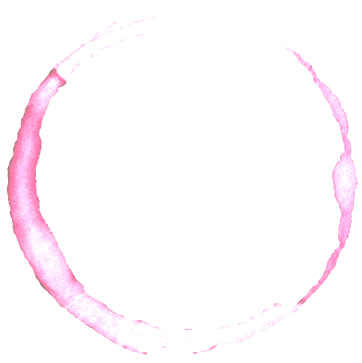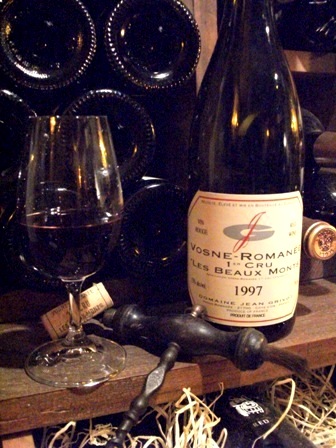
< Previous / Next >
 |
Article Index < Previous / Next > |

Cellaring Wine
- An acceptable margin of error
Rarely do I plan these articles; the motivation tends to
materialize without warning - and this latest tale of exploration is no
exception.
During an impromptu visit with friends in the city, I found myself standing
in their wine cellar for a tour and discussion of bottle storage. I
never decline the opportunity to visit a cellar; big or small, modern or
old, be it adorned with custom cabinetry or plastic milk cartons, I am
enthralled by the storage techniques that people employ for their personal
collection of treasured bottles.
The
home and subject of this discussion is stunningly tasteful, decorated in a
mix of modern, classical, and Victorian styles. Care and well-thought
planning have obviously gone into every square foot of this 130-year-old
home nestled in the heart of the
As the ladies venture in one direction
for a walk-about of the couples' latest and extensive renovations upstairs,
the gentlemen make their way below ground level for a conversation on wine
preservation. Tiled
floors accent a clean line of white cabinetry at the base of the stairs as
we make our way toward a half-lit thermal door installed between the
basement living area and the wine cellar itself. Opening the door reveals a
cold storage room now tastefully converted with wooden bottle racking that
stands approximately five feet high spanning the width of the area. We
casually chat about the old foundation, its exposure to the sun, and the
grade level outside the sunken window. To my surprise, the owner
recalls a natural earth floor beneath what is now a clean concrete slab.
‘Dirt in a wine cellar is a magical thing’ and in hindsight, my host is well
aware that given the option, to pour concrete – or any other sealed product
over the natural surface, is likely a planning oversight. A natural floor
maintains a balance within the cellar by slowly adding to and removing
humidity from the air while preserving the cool cavernous climate. You
might wish to weigh the pros and cons carefully before covering up such a
modest luxury. Most wine enthusiasts can only dream of dirt-under-foot and
must opt instead for a climate controlled room to house their best bottles.
If you fall into this group, there are numerous custom cellar contractors
that are worth looking up.
The
collection today is a tasteful mix of the old world and new. A hundred
bottles of French, Spanish, and Italian labels plus a selection of North
American wines catch my eye as I glance across the symmetrical racks.
Several examples are now ready to drink; others do not require aging, while
a select few will certainly benefit from additional time on their sides. In
essence, this well-planned cellar will serve a wide range of entertainment
needs for many years.
As we
chat, I can't help but notice and inquire about a large dehumidifier, coiled
hose, and extension cord pushed off the side of the small room. The
explanation I receive for the presence of this equipment is the reason for
this post.
"A
wine expert friend," my host recalls, "says that a cellar must remain at 60%
relative humidity and the temperature held at a constant 14˚C."
There
are two ways to address a statement like this. The first is to say nothing
in response; this collection of wine is in good hands and will certainly
mature without concern or fault. The other train of thought is to off-load
this dedicated enthusiast who is obviously on the right track but has
unknowingly placed undue concern upon a concept that was mastered long
before the invention of vapour barriers, weather-stripping, and supplemental
climate control.
Let
us first touch on humidity: in terms of a bottle's evolution, there is no
‘maximum’ level of humidly. You cannot harm a bottle of wine by storing it
in an excessively humid location. Levels above 80% will eventually cause
discolouration of the labels but no harm will ever come to the contents of
the bottle, provided the cork does its job. The possibility of mould
development in your home as a result is another subject that I won’t touch
in this discussion. At the opposite end of the humidity spectrum, bottle
storage in a very dry location for anything greater than six months will
eventually result in the failure of the cork's seal. Stelven closures
(screw caps) are immune to the effects of humidity. Bottles sealed under
natural cork however, should remain ideally within the range of 55 - 75%.
The
use of a dehumidifier in your cellar is nothing short of inconvenient. Not
only does the unit require daily attention if direct drainage is not
possible, but the machine itself generates constant heat while running.
Should your cellar environment also necessitate some form of supplemental
cooling, that system must now work even harder to maintain an ideal
temperature.
On
the subject of temperature, the ideal range for a wine cellar is 11-13˚C /
52-55˚F. Any warmer and the wine will simply evolve faster – arguably with
less style and grace. The colder end of the spectrum slows the essential
physical transformation, eventually stunting the bottle’s development
completely as you encroach on the freezing mark. The need to respect
temperature is frequently misunderstood and I will reiterate that seasonable
changes that occur gradually over several weeks are of no concern
whatsoever. Rapid changes, on the other hand, are your bottles’ worse
enemy. An example might be a sudden spike, to say 20˚ degrees on a hot
day, plummeting again to 10 or 12˚ overnight. The contents of the
bottles will expand and contract in response to the environmental changes,
but the silent victim in each case is the cork, as it struggles to maintain
the airtight seal against its glass-walled neighbour. Eventually the
elasticity of the stopper will succumb to the constant state of flux and the
wine may seep from the bottle. Of greater concern is that oxygen may in turn
replace the evaporated contents.
In an
ongoing effort to relieve some of the stress associated with buying,
storing, and consuming fine wine, I would like to summarize the idea of
storage by stating that if you plan to drink your wine in the next 30 days,
store it wherever you like (within reason). If you buy by the case but
intend to consume within six months to a year, don't sweat the small stuff.
Keep these bottles in a cool, dark location and enjoy them at your leisure.
Better bottles purchased for long-term storage do need an extra element of
care: lay these bottles on their side, in a place where they can evolve
without interruption. Follow the temperature and humidity guidelines above
while recognizing the need for a dark, odourless, and vibration-free
environment as well. This will greatly increase the potential for
enjoyment as you open these old treasures many years later.
Should you still feel that cellaring wine necessitates
the need for laboratory-like conditions, I invite you to entertain the
thought of how wine was stored only 50 years ago. If you are still
unconvinced, I’ll invite you to my place for dinner and pour you a
15-year-old bottle that has witnessed more storage sins than I care to
admit. The gradually fluctuating
cobweb-crusted stone cavern beneath our home has yet to disappoint.
For
more information on wine cellaring see also: An
Investment in Taste
| return to the Article Index | ||
Tyler Philp is a member of the Wine Writers' Circle of Canada Please direct inquires for writing services to: info@tylerphilp.com |
||
| Copyright © 2013 Tyler Philp
prior permission required for duplication of material |
||